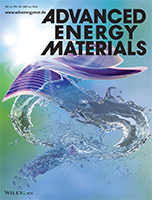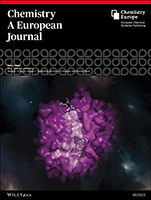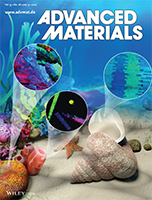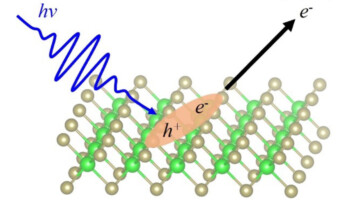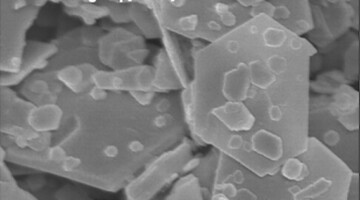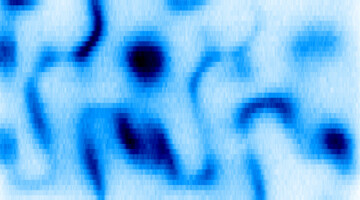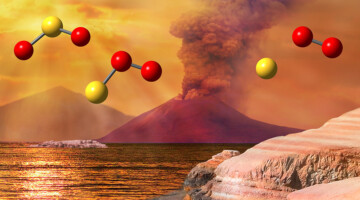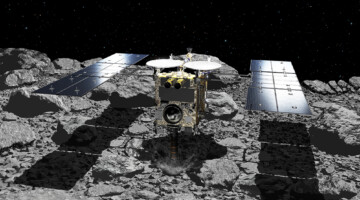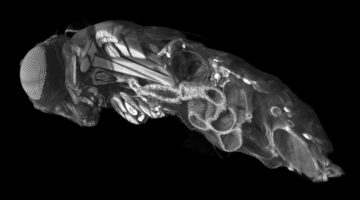Researchers achieve power conversion efficiencies approaching 10% by careful control of the nanoparticle and thin film morphologies thanks to surface energy considerations. This approach opens the route to low environmental footprint photovoltaics. Representing the promise of this sustainable direction in organic photovoltaics, the image shows the deposition of the active layer from water-based nanoparticles inks. Read more »
Allosteric Tuning of Caspase-7: Establishing the Nexus of Structure and Catalytic Power
How can allosteric sites be more effectively targeted by small-molecule drugs? Using an integrated in vitro/in silico experimental workflow; we discovered novel allosteric inhibitors of caspase-7 and revealed new connections between the active site and the remote allosteric site (i. e., allosteric structure–activity relationships, ASARs) for this valuable disease target. Read more »
A Molecular-Scale Understanding of Misorientation Toughening in Corals and Seashells
Researchers reveal that the toughness of polycrystalline seashells and coral skeletons is increased by small misorientation of adjacent crystals. The findings pave the way toward bioinspired materials with tunable toughness. Read more »
ALS in the News (June 2023)
Excitons Dance the Two-Step in a 2D Material
Excitonic insulators are a rare form of macroscopic quantum state that can be realized at a high temperature, which can be useful for quantum information science. At the ALS, researchers found that in a 2D material, a novel two-step “folding” behavior in the ARPES data signals the existence of an intermediate exciton gas state. Read more »
Surface Engineering Boosts Water-Splitting Efficiency
Researchers modified the surface of an electrocatalyst to maximize its efficiency at splitting water. The optimized material is approximately 40 times more efficient than similar commercial electrocatalysts and could help make the production of clean hydrogen fuel more sustainable and economical. Read more »![]()
![]()
Chiral Twists and Turns Lead Way to New Materials
Researchers found that, in crystals with structural chirality (left- or right-handedness), tuning the electronic behavior reveals hidden chiral phases and singularities. The results provide a new way to predict, test, and manipulate novel materials that exhibit desirable properties for next-generation electronic and spintronic devices. Read more »![]()
![]()
New Pathway for SO2 Breakup Sheds Light on Earth’s Oxygenation
While calibrating a new scientific apparatus at the ALS, researchers discovered that ultraviolet light can break up sulfur dioxide (SO2) in a new way, with molecular oxygen (O2) as an unexpected product. The discovery sheds light on Earth’s Great Oxygenation Event 2.4 billion years ago, when atmospheric oxygen levels first began to rise. Read more »
Vestiges of the Early Solar System in Ryugu Asteroid
Samples returned to Earth from the asteroid Ryugu revealed that the building blocks of life formed 4.6 billion years ago in the extreme cold of space, followed by reaction with water. The dark, coal-like organic matter in the carbonaceous asteroid could have contributed to the formation of habitable planetary environments. Read more »![]()
![]()
In Fruit-Fly Gut, Bacterial Niche Gets Remodeled for New Arrivals
Researchers found that fruit flies have a specialized niche in their digestive tracts that selects, maintains, and controls bacteria that benefit the fly. Colonization by one type of bacteria physically remodels the niche, promoting secondary colonization by unrelated bacteria. The results will help dissect the mechanisms of host-microbe symbiosis. Read more »
- « Previous Page
- 1
- …
- 13
- 14
- 15
- 16
- 17
- …
- 83
- Next Page »
